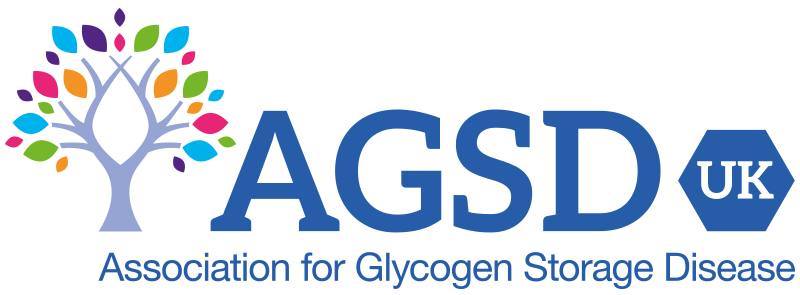All the various Glycogen Storage Diseases are ultra-rare conditions. In the UK they each have patient numbers from 0 to around 350. Many are in the 0 to 20 range. The most rare GSDs usually have very little information available and almost no research or detailed understanding by the medical world.

-
All GSDs included
-
Synergy between GSDs
-
Larger support smaller
-
Shared overheads
-
Different GSDs have led
-
Developments cascade
-
Stable and strong
-
One strong voice
Differing needs and possibilities
There is significant difference between the GSDs as to the needs of the people affected. For example, some GSDs can lead to critical illness or severe disability, whereas others may be more of an inconvenience. Some of the GSDs have nationally commissioned NHS specialist centres supporting people with that GSD or a group of GSDs, whereas others have very little specialist support, if any.
Sharing support
All the GSDs are metabolic conditions that then fall into three groups: hepatic, hepatic/ketotic and neuromuscular, and can therefore share a certain degree of services, support and knowledge. Pompe disease (GSD2) is also a lysosomal storage disorder (LSD) and thus shares with support groups for other LSDs.
![]() Visit the UK LSD Patient Collaborative web site.
Visit the UK LSD Patient Collaborative web site.
We work positively in partnership with a range of UK and international organisations with an interest in promoting the wellbeing of peoplr with GSDs and other rare conditions.
All GSDs included
AGSD-UK works across the board for all the GSDs, doing what we can to provide information and support within the constraints as already outlined. Gradually the boundaries for each GSD are being pushed back and as this happems more support and information becomes possible.
Shared overheads
For any support group there is a significant overhead of voluntary effort and finance needed to cover administration, governance, reporting and legal requirements. With all GSDs in one association we minimise and share these overheads. The GSDs with the greater numbers, and those with avenues to funding, shoulder a large part of the overheads and make it possible for the most rare GSDs to have some support.
Stable and strong
Another advantage of working together is that we have a stronger organisation, and the number of people we support is the greatest possible. These features make AGSD-UK more attractive to funders.
Speaking with one voice
By all GSDs coordinating together, AGSD-UK can represent all those affected by GSD. Our voice is therefore stronger and demands more attention when we liaise with the NHS, government, etc.
Changes over the years
At various stages in our history different GSDs have provided the core strength of the AGSD-UK. GSD1 started it all, GSD3 drove the first big fundraising efforts, GSD2 led the move to a more professional organisation, and GSD5 drove many new developments. As one GSD is strong in terms of board members, patient numbers, volunteer effort or funding the benefits extend to all GSDs. Then the baton passes on and the benefits may come from another direction.
Synergy and shared developments
There are often great benefits to be gained by the GSDs working together. Developments made by one GSD can often then be replicated more easily in further GSDs. We have benefited from this in the areas of publications, fundraising, events and courses.
Stronger together!
With over 30 years of all GSDs working together in AGSD-UK, we are certain that this approach is beneficial for all.
All GSDs pulling together makes us all stronger.

